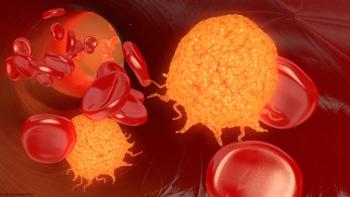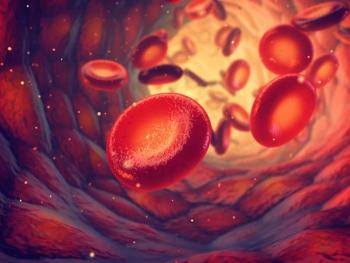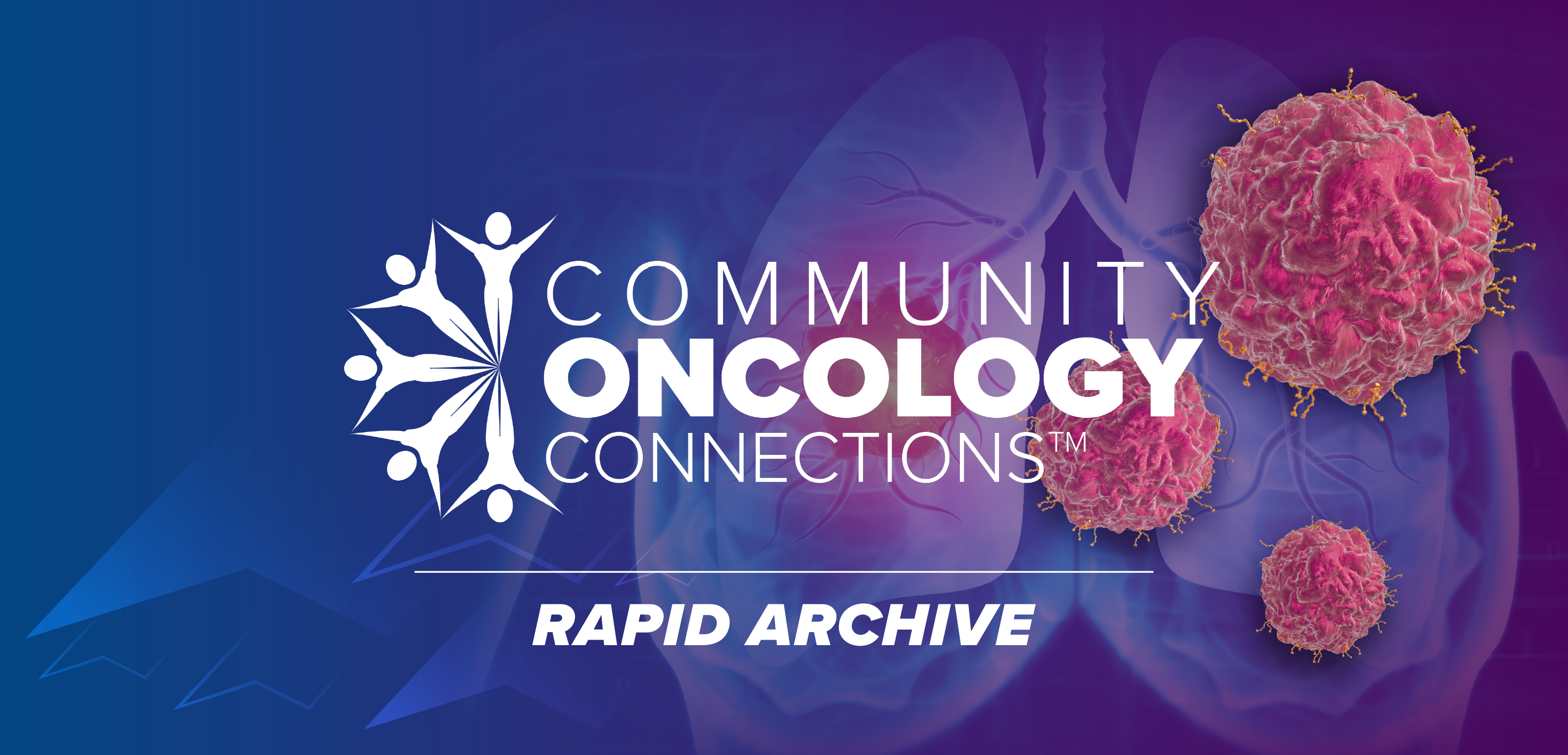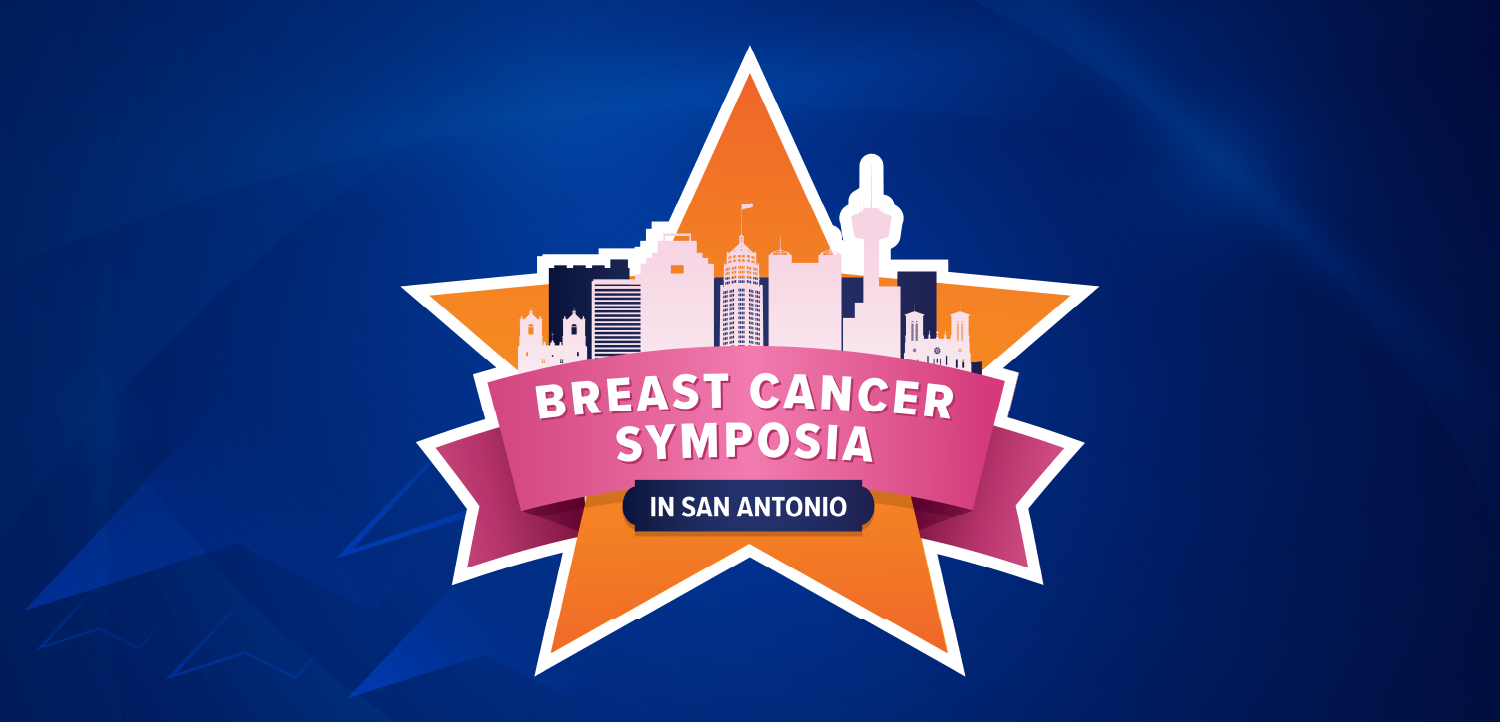
- ONCOLOGY Vol 39, Issue 1
- Volume 39
- Issue 1
- Pages: 27-28
Pinpointing Ways to Overcome Challenges in MZL
As MZL is such a rare subtype of lymphoma, it can be hard to find or begin trials geared specifically toward this population.
Marginal zone lymphoma (MZL) presents unique challenges for researchers and clinicians. Its rarity and the heterogeneity of its subtypes make it difficult to study and develop targeted therapies. Andrew D. Zelenetz, MD, PhD, highlighted the limitations of current research approaches and discussed promising developments in the MZL treatment landscape.
Zelenetz, medical director of Quality Informatics at Memorial Sloan Kettering Cancer Center, emphasized the need for greater focus on MZL as a distinct entity rather than grouping it with other indolent lymphomas. He discussed the limitations of current treatment options and the challenges of conducting clinical trials in this rare disease. However, he also pointed to the emergence of novel therapies, such as Bruton tyrosine kinase (BTK) inhibitors and chimeric antigen receptor (CAR) T-cell therapies, which hold promise for improving outcomes for patients with MZL. While initial data suggested limited efficacy of CAR T-cell therapy in MZL, longer follow-up data are showing improved outcomes.
Q / What are the most significant recent advancements in the treatment of MZL, and how have these impacted treatment outcomes?
Zelenetz / When we talk about advances in MZL, one of the things we suffer from is there tends to be a lack of focus on MZL as a separate entity. The reason for this is if you take MZL in its entirety it only represents 5% to 6% of all non-Hodgkin lymphomas. It’s a relatively rare entity. What makes it even more complicated is we have 3 subtypes of MZL, including extranodal, splenic, and nodal marginal zone lymphoma, that have different clinical behaviors and somewhat different molecular lesions. Some are difficult to quantitatively measure, like [in] splenic MZL, how big should a spleen be? When it shrinks how do we know that someone’s in remission?
The rarity and the complexity of the disease have made it less attractive for pharmaceutical companies to focus their attention on MZL. What often happens is that MZL gets folded in with the much more common follicular lymphoma. Both are slow-growing, indolent B-cell lymphomas, and there is an MZL cohort. When the study results are published, usually, the [results for] patients with MZL are a little bit too small to report by themselves, and you don’t know what that new treatment did in MZL. This is a real problem that we have.
Q / What are some emerging treatment options in the space?
Zelenetz / Some of the small molecules have proven to have efficacy in MZL. One of the first was the PI3K inhibitors, the PI3Kδ inhibitors, [which,] unfortunately, as a class, are now dead, but these were particularly good drugs for MZL, and there was substantial activity. What followed that was a study of a [BTK] inhibitor and in a phase 2 study dedicated to MZL, it was demonstrated that there was activity, and it became incorporated as one of the go-to treatments for the management of MZL.1
Subsequently, additional studies have been done with other BTK inhibitors, including zanubrutinib [Brukinsa], which has FDA approval for the treatment of MZL.2 This represents a bit of a bright light where we did introduce a new drug for the treatment of MZL in a specific area. We’ve seen [that] the other big area of interest in the development of drugs for lymphoma has been in immunotherapy, and there’s been a big push for CD19-directed CAR T cells; a number have been approved for the treatment of diffuse large B-cell lymphoma and follicular lymphoma.
The early results, particularly with axicabtagene ciloleucel [Yescarta], suggested that maybe MZL didn’t respond as well. This was an issue of small numbers with limited follow-up, and when you looked at the initial curves in the low-grade lymphoma study, it looked like the MZL [cohort] wasn’t doing as well, but in fact, with longer follow-up, with more patients, the outcomes have improved. We also have seen promising results with lisocabtagene maraleucel in MZL, but because of the size of the population and where we are, we haven’t gotten the approval for these agents for the treatment of MZL. This is an area of missed opportunity.
Another big missed opportunity in the other exciting area of immunotherapy that’s emerging in the B-cell lymphomas is the bispecific antibodies. We’ve seen agents approved for DLBCL and follicular lymphoma. It’s been very difficult to even get any of the sponsors interested in doing an MZL study. There’s some exploratory information. There’s the inclusion of a few patients in early phase 1 or phase 1b studies that suggest that there’s activity, but getting the pharmaceutical companies to commit to a full evaluation of these drugs in MZL has been frustrating.
Q / What are the challenges to managing adverse effects?
Zelenetz / Each of these new classes of drugs has its own adverse effect [AE] profile. What happened to the PI3K inhibitor is the FDA felt that the way they were being developed, they were more risk than benefit, which is why they put the kibosh on the class, though it is not impossible to change the development strategy. We did this for one of these agents and showed that you could have a favorable safety vs toxicity profile.
For the drugs that we’re actively developing and actively using, like rituximab monotherapy, which is still a mainstay; BTK inhibitors; the investigational use of CAR T cells; and bispecific antibodies, we’re not seeing unique toxicities associated with these agents, with an exception. What we’re seeing, in large measure, is an AE profile similar to other B-cell malignancies. Sometimes, MZL can have a significant leukemic phase, so there can be a lot of circulating lymphoma cells, and in that setting, particularly with bispecific antibodies and CAR T cells, there can be an exacerbation of cytokine release syndrome.
These toxicities can be mitigated by a variety of strategies, such as reducing the disease burden before going into treatment. That’s a frequent approach with CAR T cells to use some bridging treatment to do some cytoreduction. We know that cytoreduction, if we left it alone, would be transient, but that is one way of doing it. With the bispecific antibodies [we] do what we call step-up dosing, where we use a small amount of the drug and then increase the drug over time. These are ways that we can mitigate this overstimulation of T cells that contribute to the cytokine release syndrome, but again, these are challenges that we can see in other settings with B-cell lymphomas and MZL, fortunately, does not represent a uniquely difficult area with respect to AE profile of drugs.
Q / How can clinicians stay updated on the rapidly evolving field of MZL treatment?
Zelenetz / This is a problem in lymphoma. If you look at the American Cancer Society chart, lymphoma is either fifth or sixth, depending on a man or a woman [for the most common cancers]. That sounds like, “Oh, that’s pretty common.” If you break it down, and then you would have the list, MZL wouldn’t be fifth or sixth, it would be 30th or 50th. That’s true for each of the lymphomas. As an aggregate, yes, they’re relatively common, but as individual diseases, they become less and less. When the practicing oncologist is looking to augment their knowledge and education, the first thing they’re doing is not thinking about the lymphoma session at [the American Society of Clinical Oncology Annual Meeting]; they have to go to see the breast cancer session or the lung cancer or colon cancer session. When they look at the new visits in their clinic, those are the patients who are coming in the door much more frequently.
What clinicians need to do is they need to have resources where they can find dedicated information. Places like the Lymphoma Research Foundation [and] the Leukemia & Lymphoma Society have on their websites information that is for patients, but also for treating physicians to bring them up to date. The other place that gets the most traffic is the B cell guidelines from the NCCN [National Comprehensive Cancer Network]. These are not only used widely in the United States, but they’re also used widely around the world since these lymphomas are not a dime a dozen. If we look at the total number of doctors who treat lymphoma, and we looked at the total number of patients, the reality is that the average person, not the lymphoma specialist, but the average person sees maybe 1 or 2 lymphomas every year or 2, not very frequently, and so it’s more important to have a real-time place to go, and that’s really where the NCCN guidelines help physicians, because those are updated a minimum of once a year, usually twice a year.
The lymphoma guidelines tend to be updated sometimes 3 times a year based on the most current data. This is where there’s a smaller trial that may not make it to FDA approval of a drug, but may allow us to recommend a drug for the treatment of MZL.
Q / How would you like to see the field evolve?
Zelenetz / I’d like to see pharmaceutical companies appreciate the fact that MZLs are biologically distinct and be more open to having clinical trials dedicated to MZL so that we can understand the efficacy of these drugs. We can come up with interesting ideas [of combining different treatments], and this has a great theoretical potential for treatment of MZL, [but] is it going to work? I need access to the drugs. That is an important aspect of what we do, is to try to convince pharmaceutical companies to appreciate some of these rare orphan diseases that may not make billions of dollars selling a drug for MZL, but that doesn’t mean that these are not important areas, and it’s an opportunity where they have drugs that may have very important positive impacts on the outcome of patients with MZL.
References
- Noy A, de Vos S, Thieblemont C, et al. Targeting Bruton tyrosine kinase with ibrutinib in relapsed/refractory marginal zone lymphoma. Blood. 2017;129(16):2224-2232. doi:10.1182/blood-2016-10-747345
- FDA grants accelerated approval to zanubrutinib for marginal zone lymphoma. FDA. September 16, 2021. Accessed January 9, 2025. https://shorturl.at/hG4f8
Articles in this issue
10 months ago
Advancing the MZL Landscape Through the MZL Workshop10 months ago
Outlining Incidence Trends and Disparities of MZLNewsletter
Stay up to date on recent advances in the multidisciplinary approach to cancer.


















































































